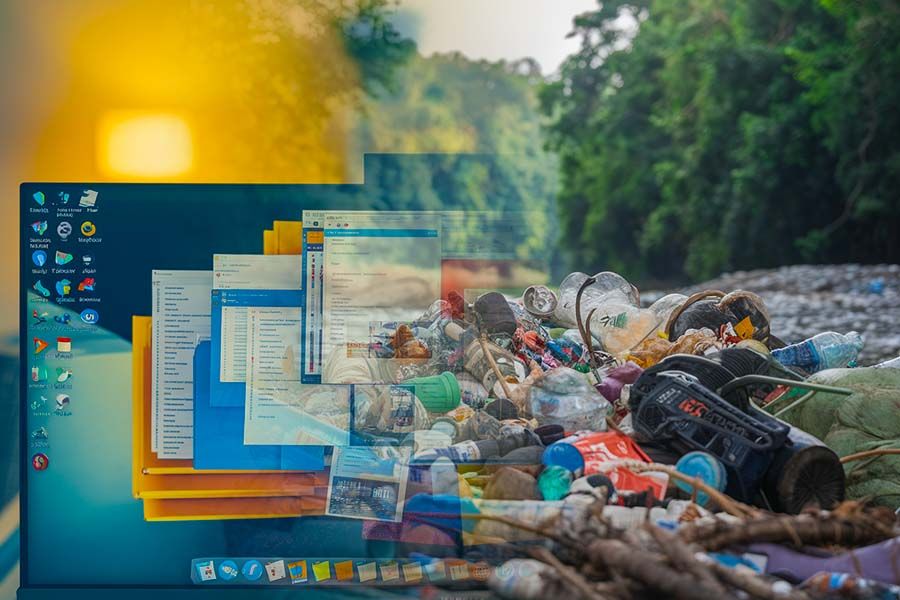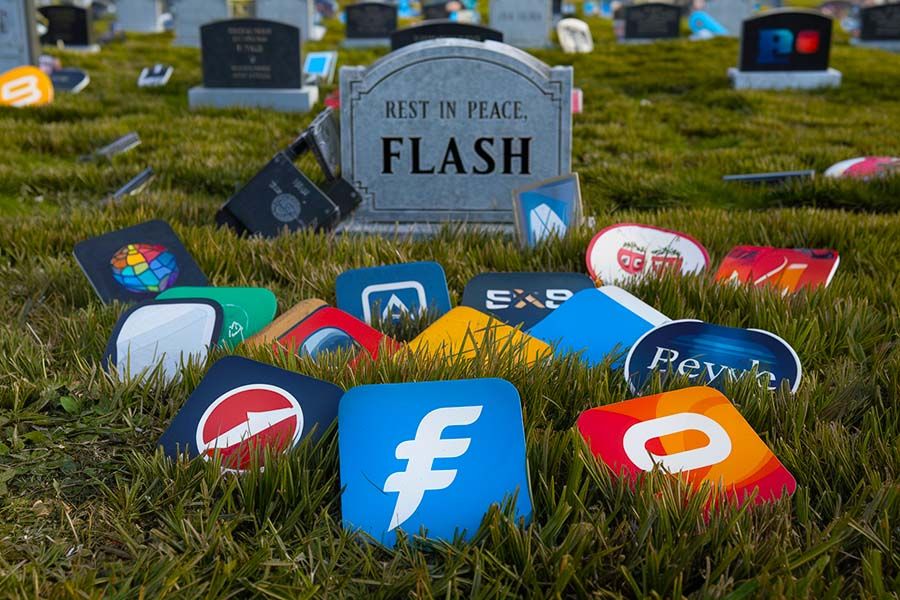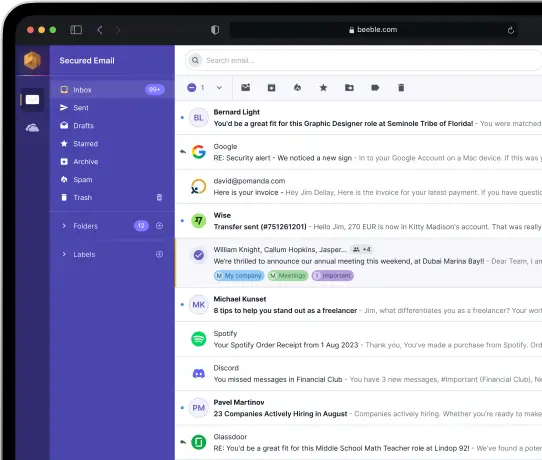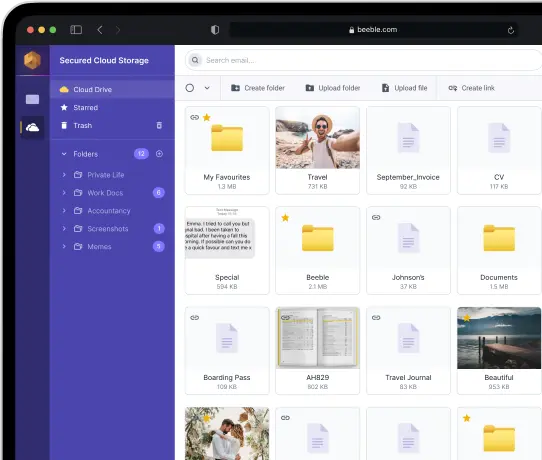Summer Cleanup! - How to Get Rid of Digital Trash

As the Little Prince willed us
“It’s a question of discipline… When you’ve finished washing and dressing each morning, you must tend your planet.” - Antoine de Saint-Exupéry’s timeless words remind us that time doesn’t stand still. The world’s population has soared to over 8 billion, with two-thirds of them online. According to Statista, as of January 2024, there were 5.35 billion internet users, accounting for 66.2 percent of the global population.
The digital clutter on your computer, storage, and social networks may seem like a personal concern, but it’s far more significant than it appears. Data isn’t stored in some mythical “cloud.” It relies on physical hardware and electricity. We create endless content, constantly captivated by everything from cute kittens to vibrant spring flowers. Pictures, videos, documents, and casual chats consume a massive amount of digital space.
However, much of this data is simply digital rubbish. Think about all the forgotten files in the cloud, countless duplicate documents, and app caches cluttering your digital life. The volume of this garbage is rising alarmingly, not just because of new users but because data itself is becoming heavier. For instance, photos that once averaged 1 MB in size two decades ago now often reach up to 3.5 MB — three and a half times larger! Experts warn that, without action, our storage solutions will inevitably overflow.
While advancements like improved magnetic tapes and quartz glass for data storage are in the works, we won’t see them for a few more years. There’s even talk of DNA-based storage devices that could hold over 500 million TB in the next century. But not everyone can afford to wait for these breakthroughs.
As more information shifts from local storage to the cloud, the burden of data grows heavier. Unless we take steps now, data centers are bound to face a collapse. Solutions are being proposed, both hardware and software, but instead of investing in new infrastructures, it might be easier to develop better data compression algorithms. Companies like Google and Apple are already optimizing and creating new methods to reduce file sizes.
The threat is not virtual, but real!
The pollution of the Internet affects both the digital realm and the physical environment. A recent study from the University of Bristol indicates that uploading videos to YouTube alone could increase CO2 emissions by up to 300,000 tons per year—the equivalent of the carbon footprint from 30,000 homes in the UK.
For everyday users, the cluttering of the Internet presents both challenges and opportunities. On the downside, it makes finding necessary information more time-consuming since the same data often appears across multiple sites, rewritten or copied without proper attribution.
But there’s a silver lining! An increased pool of graphic elements, especially photos, simplifies our searches. Being able to find images through various renditions is a direct result of this digital mess.
So, how can we reduce the amount of digital garbage? The answer is straightforward and mirrors cleaning your physical space: don’t procrastinate! Be ruthless in deleting spam, receipts for trivial purchases, and those less-than-perfect photos or videos. Clear out old dialogues in your social media accounts, remove unnecessary files and apps, and regularly empty your email trash. Organize your digital space by structuring and cataloging files. Finally, consider taking breaks from the internet and social media — something we delve into in our article on digital detox.

Don’t put off decluttering until tomorrow!
Taking that first step in your digital cleanup can be daunting, but once you start, it’ll become much easier. Begin by assessing the extent of digital clutter on your device. On your smartphone, check how much internal memory you’re using; on a laptop or desktop, you can do this via “My Computer.” If over 90% of your memory is occupied, it’s time to clean up — because that remaining 10% can vanish in an instant! Ideally, leave at least 20% of your storage free for optimal functioning.
Let Go of Heavy Memories. “Heavy” here refers to the space that photos and videos occupy. Ask yourself, how often do you revisit vacation photos from ten years ago? In many cases, the answer is “never.” The best solution is to delete those images. But if you can’t bear to do so, consider transferring them elsewhere.
The first, way is to transfer all your photos and videos to a cloud service. We suggest you evaluate the advantages of cloud storage from Beeble. Here not only mail but also cloud storage works on the principle of end-to-end encryption. Accordingly, all files of any size uploaded by the user get to us in encrypted form. No one but the user can decrypt them. Beeble has email and file storage as a single application and the user can transfer information between them.
The advantages of cloud storage are clear — it not only frees up space on your device but also protects your memories. If your phone gets wet or is stolen, you’ll still have access to your files through the cloud. Another option is to transfer your data to an external drive. Just like home cleaning, regularly transferring photos is essential. Set up a cleaning schedule to prevent a situation where you miss capturing a precious moment because your device is full.
The App Graveyard
Have you ever taken a moment to consider all those icons cluttering your computer desktop or phone’s app screen? A discount coupon app that hasn’t worked in years? A piano lesson program you never used? Fitness apps, gardening tips, or games your child downloaded ages ago? It’s clear that once these apps seemed indispensable, but now they just gather digital dust.
Remember, every app you download takes up space, and some may even silently charge subscription fees. The same principle applies to programs on your computer. Conduct an inventory, identify the ones you don’t use, and uninstall them via Properties and Disk Cleanup. Look back at your monthly spending and cancel any unnecessary subscriptions.

Clearing the Cache
When was the last time you thought about your device’s cache? Countless actions online lead to the accumulation of pictures, logins, and passwords, which can slow your device down. Beyond just freeing up RAM, cleaning your cache is also a matter of privacy. If someone else uses your smartphone, they might track your browsing habits or access confidential information from cached files.
Many cache cleaner programs exist for both computers and smartphones, though it’s often safer to clean manually to avoid deleting something crucial. Some of these programs may even harbor malware. You can clear your computer’s cache through “History,” while on phones and tablets, each app has a “clear cache” option in “Settings.”
Who Are All These People?
Online business accounts have become an important tool for entrepreneurship, social media accounts are essentially a “storefront” of a virtual store or a store’s website, where one can conduct business online from anywhere in the world. And how recognizable, popular among users account, depends on the success of a particular organization.
Recognizability is determined by the rules of social networks. With this in mind, the cost and price of the account itself in social networks increases, which can also be transferred from one user to another (by transferring login and password).
A special role is given to accounts in the project developed by Facebook — in the so-called meta-universe. In one of the next issues of our blog, we will elaborate on how “digital wealth” is transferred and inherited in entrepreneurship.
Other Ways to Clean Up Your Digital Space
- Deduplication: This method helps eliminate duplicate data. It can be achieved at various levels — block, file, or byte — and can reduce unnecessary data by up to 20 times! Think of it as a desktop shortcut that points to the original file.
- Active and Passive Storage: This system mirrors what’s found in many modern user computers: keeping the operating system and frequently used programs on SSDs while less-used data resides on HDDs. The same applies to data centers.
- Paid Subscriptions: Remember, “free” often leads to overspending. Gone are the days when film cameras made us cherish every shot. Nowadays, we snap hundreds of photos of anything that catches our eye. A paid subscription can encourage you to evaluate what’s truly valuable and what can be discarded.


